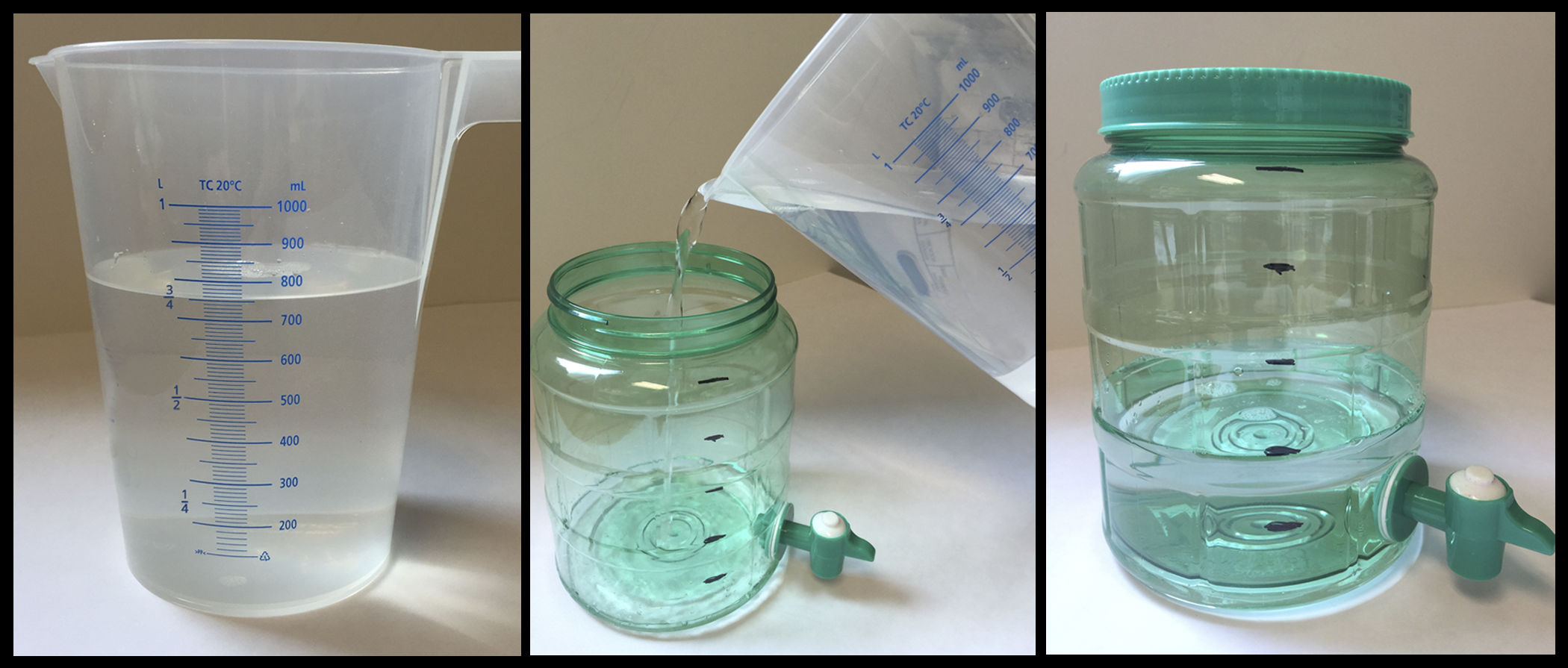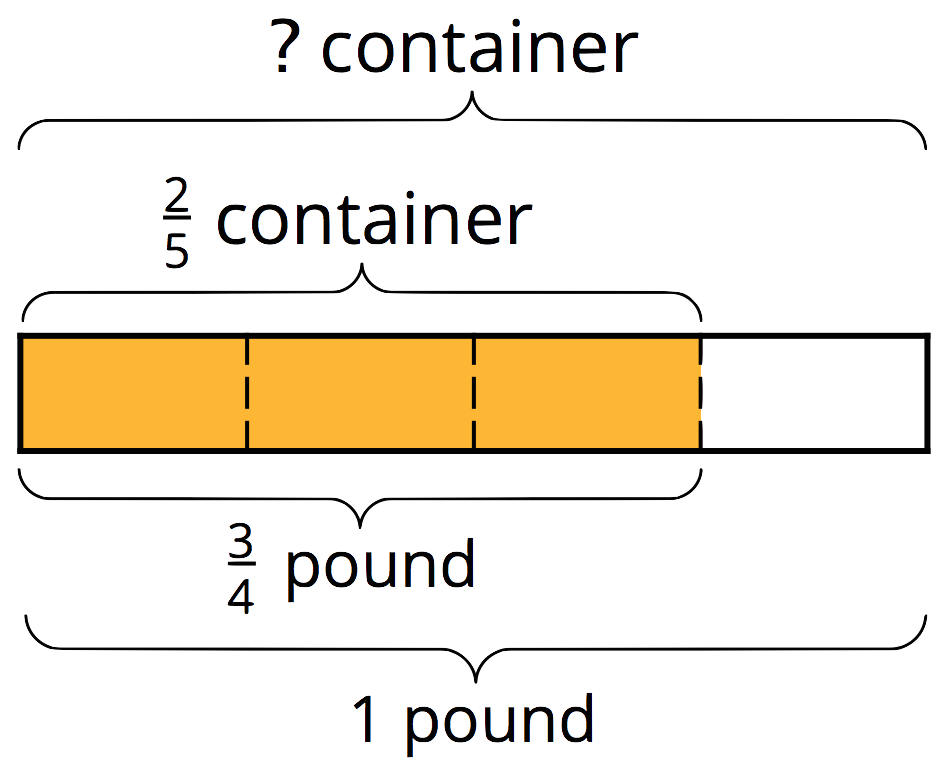9.1: Number Talk: Greater Than 1 or Less Than 1?
Decide whether each of the following is greater than 1 or less than 1.
- \frac12\div\frac14
- 1\div\frac34
- \frac23\div\frac78
- 2\frac78\div2\frac35
Let’s practice dividing fractions in different situations.
Decide whether each of the following is greater than 1 or less than 1.

How many liters of water fit in the water dispenser?
Write a multiplication equation and a division equation for the question, then find the answer. Draw a diagram, if needed. Check your answer using the multiplication equation.
Write a multiplication equation and a division equation and draw a diagram to represent each situation and question. Then find the answer. Explain your reasoning.
Trade descriptions with a member of your group.
Sometimes we have to think carefully about how to solve a problem that involves multiplication and division. Diagrams and equations can help us.
Let’s take this example: \frac34 of a pound of rice fills \frac25 of a container.
There are two whole amounts to keep track of: 1 whole pound, and 1 whole container. The equations we write and the diagram we draw depend on what question we are trying to answer. Here are two questions that could be asked:
We can represent and answer the first question (how many pounds fill a whole container) with:
\frac 25 \boldcdot {?} = \frac 34
\frac 34 \div \frac 25 = {?}

If \frac25 of a container is filled with \frac 34 pound, then \frac 15 of a container is filled with half of \frac34, or \frac38, pound. One whole container then has 5 \boldcdot \frac38 (or \frac {15}{8}) pounds.
We can represent and answer the second question (what fraction of the container 1 pound fills) with:
\frac34 \boldcdot {?} = \frac25
\frac25 \div \frac34 ={?}

If \frac 34 pound fills \frac25 of a container, then \frac14 pound fills a third of \frac25, or \frac {2}{15}, of a container. One whole pound then fills 4 \boldcdot \frac{2}{15} (or \frac {8}{15}) of a container.